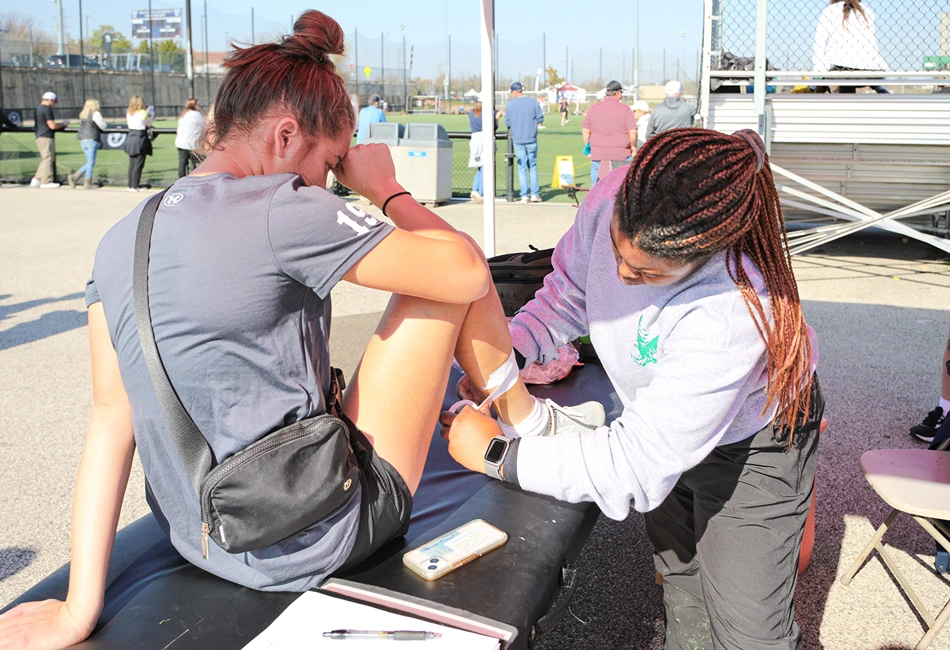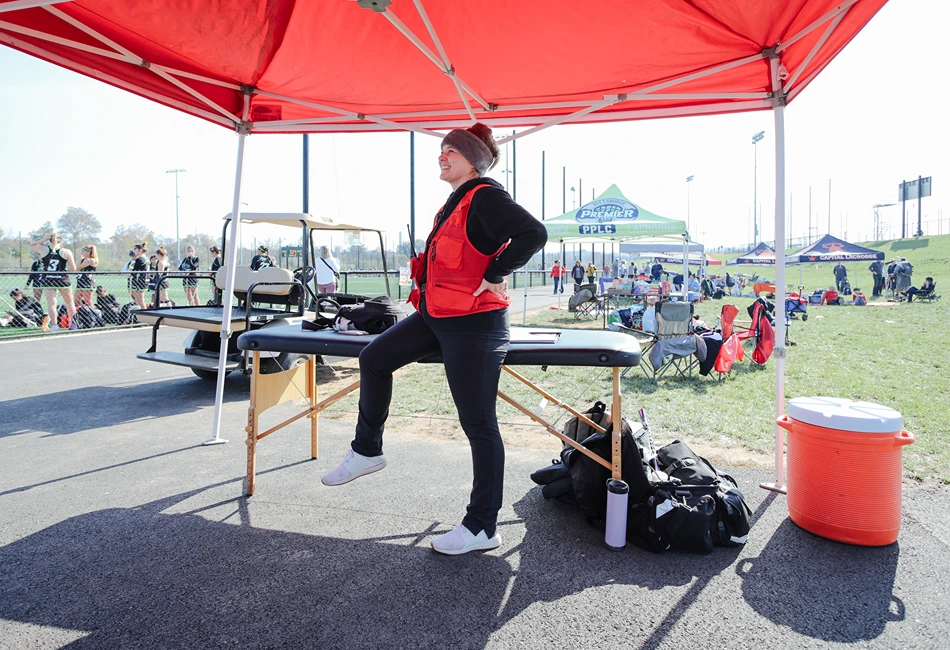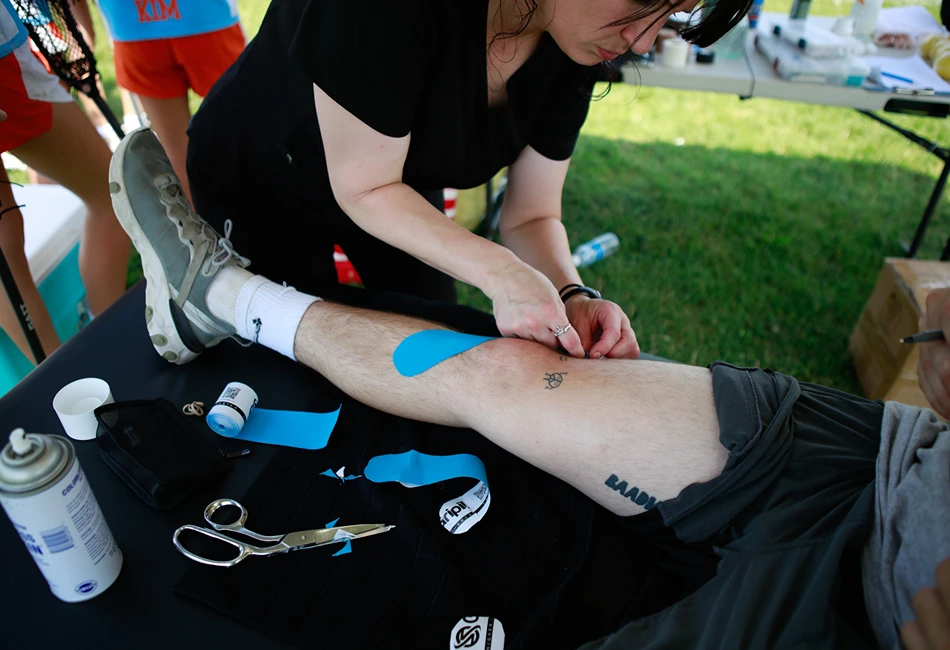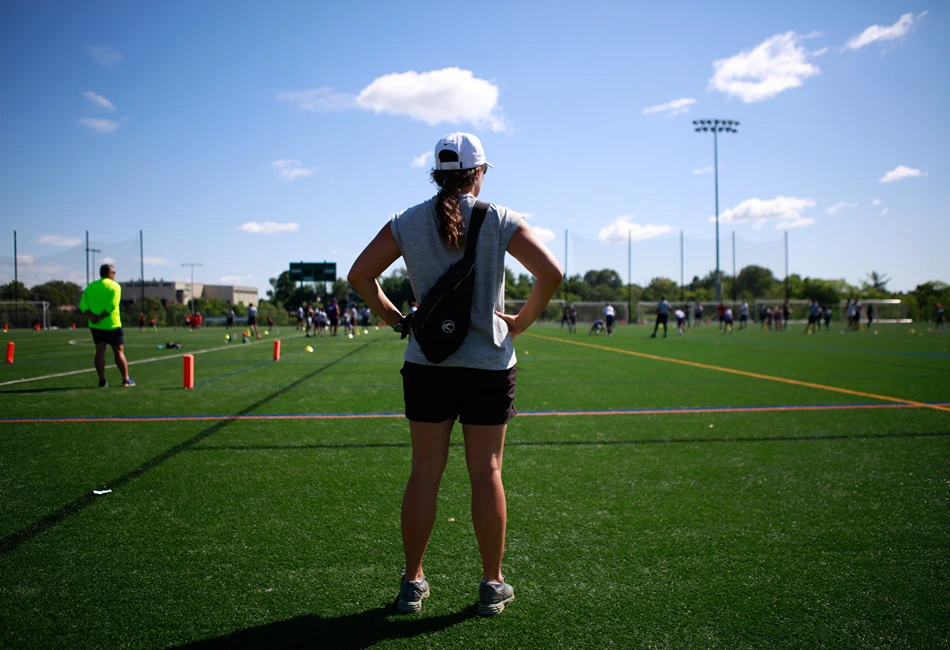Essential strategies for effective emergency action planning in sports event management
By Robin Baxter and Ellis Mair
Effective risk management is critical in sports event planning, ensuring the safety of participants, staff and spectators while safeguarding the integrity of the event. Comprehensive risk management encompasses several key areas: Emergency Action Planning (EAP), policy development, proper medical staffing, staff training and documentation.
Stay Ahead in Sports Planning—Subscribe Today! and Read More Sports Info for FREE

Importance of Having an Emergency Action Plan (EAP) for an Sports Event
An EAP is the cornerstone of risk management in event planning. It outlines the procedures to follow during emergencies, ensuring a swift, organized response to medical emergencies, weather incidents or security threats. The EAP serves as a blueprint for action, minimizing chaos and confusion during critical moments.
Attendees and participants are coming to your event with the expectation that you have a well-thought out plan that follows up-to-date best practices that your entire team and staff are aware of and able to execute on. If you’re just getting started, the newly updated “National Athletic Trainers’ Association Position Statement: Emergency Action Plan Development and Implementation in Sport” can serve as a valuable resource.
While creating an EAP is the first step, regular reviews are essential to ensure its effectiveness. Conducting drills and simulations helps staff familiarize themselves with the plan, identify potential weaknesses and make necessary adjustments. Be sure to document who is present and when you practice your plan as this falls in line with current best practices. Continuous review and updates are crucial, especially when there are changes in venue, staff or regulations.
The plan should be shared with all stakeholders, including staff, volunteers, participants and emergency responders. Circulating the EAP ensures that everyone involved knows their roles and responsibilities, fostering a coordinated and efficient response during emergencies.

Best Practices for Your Sporting Event EAP
Developing comprehensive policies based on the latest research is essential for managing specific risks. A starting point for your policy development list should include the following:
- Weather: Implement protocols for severe weather conditions, such as lightning, wind, tornado, extreme heat or cold. These should include constant monitoring of weather conditions, determining safe participation levels, implementing evacuation or sheltering procedures and criteria for event delays, modifications or cancellations.
- Concussion: A concussion management policy outlines procedures for identifying, assessing and managing head injuries. This includes guidelines for return-to-play decisions, documentation and post-injury monitoring.
- Catastrophic Injury: Prepare for catastrophic injuries by having a plan for immediate medical response, transportation to medical facilities and communication with families and media.
- Missing Child: A missing child policy should detail steps for search and rescue, communication with parents and authorities and a plan for a found child that needs to be reunited with parents.
- Mass Casualty Incident: In the event of a mass casualty, having a clear plan for triage, medical care and coordination with emergency services is critical. While these scenarios can be hard to think about, it is critically important that you discuss possible situations.
Understanding the hierarchy of policies between the facility and the event renter is crucial. Event organizers must ensure that their policies align with and complement those of the facility. Clear communication and collaboration with facility management can prevent conflicts and ensure cohesive risk management practices.
Level Up Your Event Planning Skills—Subscribe Now and Download the SPG Magazine for Expert Tips and News

Proper Medical Staffing for Sports Events
Medical Staff Ratios determine the appropriate ratio of medical staff to participants that is essential for effective risk management. This ratio can vary depending on the type of sport, level of competition, number of participants, number of playing surfaces and the level of risk involved. National Governing Bodies (NGBs) often provide guidance in regards to proper medical staffing ratios.
Facility Layout is important, with medical stations strategically placed for easy access in view of all playing surfaces and clear signage directing participants and spectators to these areas. Understanding the facility’s layout also aids in planning evacuation routes and emergency access points.
Credentialed Healthcare Professionals with the proper qualifications and experience are paramount to ensuring proper care. Athletic Trainers (ATs) are highly-qualified, multiskilled healthcare providers that are leaders in sideline care for athletes. Emergency Medical Technicians (EMTs) can be useful on site in the event of an emergency, but when it comes to making return-to-play decisions, concussion evaluations or orthopedic evaluations, ATs are the healthcare provider that you want on your staff.
Appropriate Insurance coverage is a vital aspect of risk management. This includes liability insurance for the event and workers’ compensation for staff, independent contractors and volunteers. Adequate insurance protects against financial loss and provides a safety net in case of unforeseen incidents. It is also important to ensure that the healthcare providers that you are hiring carry their own professional liability insurance.
Planning for the Long Day, such as providing breaks, restroom access, meals and access to shade, A/C or heat, ensure that your staff is able to care for your participants. Schedule shifts that will prevent fatigue, provide sufficient supplies and equipment.

Training Your Staff
Pre-Event Communication, such as meetings, are essential for briefing staff on their roles, discussing the EAP and addressing any concerns. Clear communication ensures that everyone is on the same page, reducing the likelihood of mishaps during the event.
Pre-Event Medical Meeting allows medical and event staff to discuss their roles, assess potential risks, review protocols and ensure that all equipment and supplies are ready.
On-Site Collaboration provides coordination between medical personnel, security and event organizers and staff to ensure a unified response to any incidents. Establishing clear lines of communication and channels, with walkie talkies, cell phones, etc., and having a designated point person for emergencies will improve efficiency.
Debrief by gathering staff to discuss what went well and identifying areas for improvement helps refine future risk management strategies. Take on-site notes in real time to reference back to in this meeting. Documenting lessons learned and incorporating feedback into the EAP enhances preparedness for subsequent events.

Documentation
HIPAA Compliance ensures that all medical records and personal information are handled securely, protecting the privacy of participants. Compliance with HIPAA standards is not just a legal requirement but also a demonstration of commitment to ethical practices.
Shareable to Patient/Parent documentation should be accessible to those it concerns, such as patients and their parents/guardians. Providing copies of medical records and incident reports ensures transparency and facilitates better communication between medical staff and families.
Seven Years is the recommended amount of time that records should be meticulously maintained and preserved, though timelines might change depending on regulations in your state. This retention period aligns with legal requirements and best practices, ensuring that documentation is available for future reference if needed. Proper archival of records also aids in tracking patterns, identifying risks and improving safety measures over time.
Robin Baxter brings over 18 years of sport industry experience in a variety of roles including coaching, event management, housing, NGB event sanctioning and risk management.
Ellis Mair is a certified athletic trainer and the Co-Founder of Go4, a cutting-edge platform that provides a comprehensive risk management solution. Leveraging advanced technology, Go4 automates the creation of emergency action plans, facilitates the hiring of athletic trainers from a national network of over 23,000 professionals, and offers a HIPAA-compliant electronic medical record (EMR) system.
Join the Community of Sports Planners! Get Your Free Subscription and Download the Sports Planning Guide Magazine for FREE









